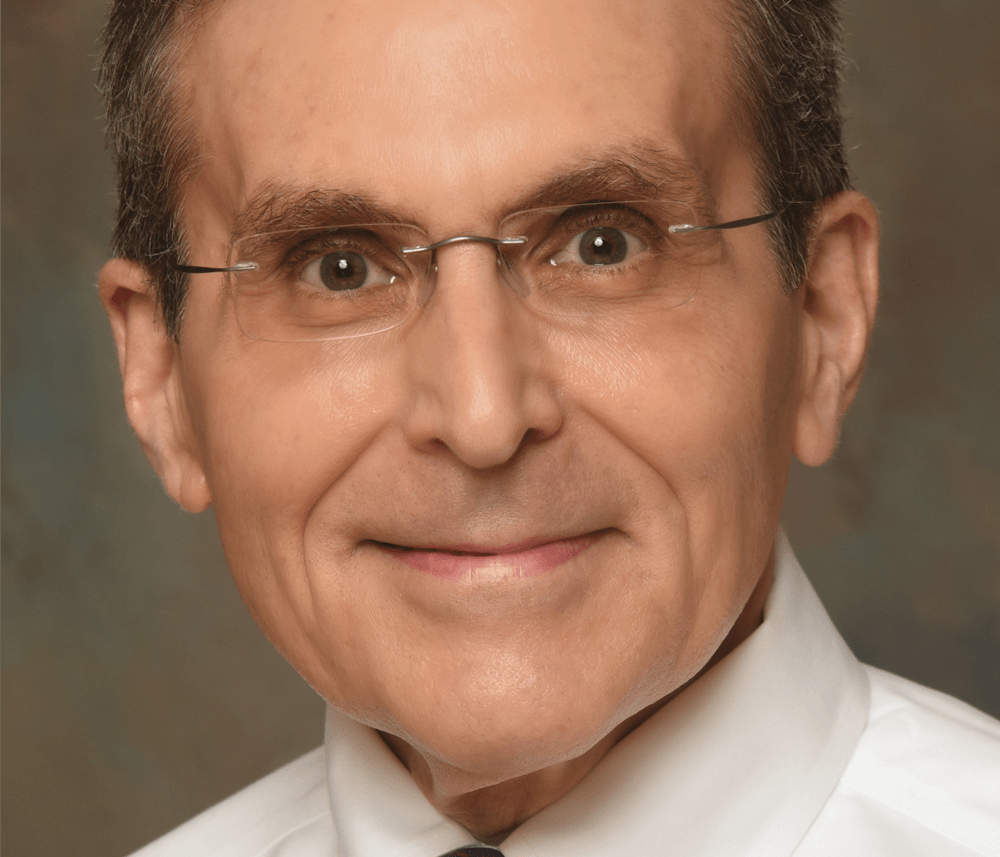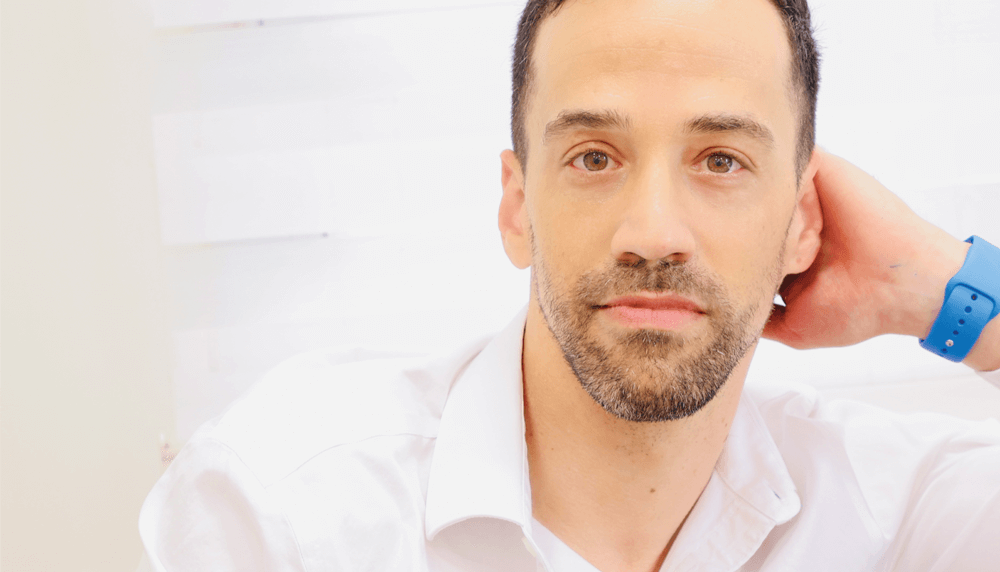
Omer Trivizki, Director of the Macula Center at the Ophthalmology Division, Tel Aviv Medical Center, Tel Aviv University, Tel Aviv, Israel, and Research Associate in Ophthalmology at the Bascom Palmer Eye Institute, University of Miami Miller School of Medicine, Miami, Florida, USA: Let’s start at the very beginning! Did you always want to be a physician?
Philip Rosenfeld, Professor of Ophthalmology, Bascom Palmer Eye Institute, University of Miami Miller School of Medicine, FL, USA: Yes, I did! But, I wasn’t sure if I wanted to get formal research training. Nowadays, MD/PhDs are common, but when I was in college, the idea of getting a combined degree was just gaining traction. There were always PhDs who went back for an MD, but it was unusual for a clinician to go back and get a PhD. I often ask those people whether they were researchers first who wanted the insurance of an MD degree or clinicians first who wanted to do research. In the past, physicians who wanted to do research would just go into a lab and be a postdoc, and while there are many examples of successful clinician-researchers who followed that path, I came to realize that laboratory science was getting so complex that the training I would get as a postdoc would be very different than the training I would get as a real PhD student learning how to be a scientist. Nowadays, some MD/PhD programs will grant the PhD after a certain number of years in the lab, but I wanted a real PhD; I wanted a program that threw the PhD student into the lab with no guarantees. I spent five years in the lab, and, in retrospect, it was far more difficult to get the PhD than the MD. Also, I’m convinced that the experience made me a far better researcher than if I had gone back after medical school to be a postdoc. The PhD gave me the basic tools on how to direct my skills and answer any research question. I learned that scientific rigor was most important – not the techniques or learning about the specific scientific area of the PhD research. I see MD/PhD graduates making the same mistake over and over again when they stubbornly stick to the same area of science that they studied as a graduate student. The real value of the MD/PhD training is to follow your medical passion and ask the important research questions in whatever medical field you choose – and then to go ahead and advance medical knowledge and patient care in that specialty.
How did you get into ophthalmology?
I fell in love with ophthalmology as a fourth-year medical student after I already matched in OB/GYN to be a reproductive endocrinologist. I got two-thirds of the way through my third year of my four-year OB/GYN residency before I switched to ophthalmology. As an OB/GYN resident, I decided to spend my elective time with Stuart Fine, who was very influential in getting me to fall in love with ophthalmology as a medical student. His fellows at the time were Karl Csaky and Jenny Lim. How lucky could I get?! I was convinced then and there to make the switch into ophthalmology. I’m really grateful to Karl and Jenny and we remain friend and colleagues, and it all goes back to when they were medical retina fellows and I was an OB/GYN resident.
It’s a great example of a decision that was both a mistake and a great turn of events. I often ask myself if I’ve made any bad decisions in my life, and I’m fortunate to say that I would not change anything. By changing one decision, there’s no guarantee that I would end up in the same place, and now I have the greatest job in the world. My dream would be to do exactly what I’m doing now – but it would be even better if I had unlimited funding so that I could explore all the important but unanswered questions in retina – especially in AMD. And if I won the lottery, I would self-fund all my research and continue on exactly the same path.
What inspired you to become a retina specialist?
Genetics and the many unanswered questions in retinal degenerations. I was a molecular biologist/geneticist by training, and I loved the way inherited retinal diseases could be followed by just examining the eye.
Which questions bother you most today?
I embrace cognitive dissonance. I look at the facts and try to make sense of them, and when the puzzle pieces don’t go together, I start thinking of alternative explanations. And that’s why favorite saying is “Sacred cows make the best burgers.” Also, I’m hypnopompic, which means I get my best thinking done just before I wake up, and that continues into the shower. By focusing on a clinical problem that really bother me, I use the morning to devise experiments that will answer the question. For example, the other morning I was torturing myself by trying to understand why extrafoveal GA grows faster than foveal-involving or central GA. I think I understand why the cone-rich/Mueller cell-rich fovea resists atrophy until late in the disease process, but why should the entire GA lesion slow down once the GA is consumed. I think I figured it out – and now we’re testing my hypothesis.
If you could talk to young Phil on his first day of residency, what would you tell him?
Relax, you’ve got this. Trust your gut, follow your instincts, and ask the important questions; specifically, go where there’s unmet need. One of the great advantages of going down a uniquely untraveled path is that you don’t have to read all the research that was done by others. To summarize, my advice would be “Worry less, and enjoy the journey!”
Philip, you changed the world with bevacizumab. How did it come about? What in your training or your personality made you capable of making this amazing step?
Well, it goes back to my PhD training and just being comfortable with science even though it was outside my area of specialization. As a graduate student, I studied adenovirus DNA replication, protein biochemistry, and viral molecular biology. It was that training that made me comfortable understanding the molecular biology and protein biochemistry of VEGF. I soon realized that Avastin and Lucentis were derived from the same bacterial plasmid construct, both Avastin and Lucentis bound VEGF at the same position, and the only real difference was size. Avastin was commercially available for colon cancer therapy, so I devised an experiment using intravenous Avastin, which was successful, and that led to intravitreal Avastin once I realized that the packaged molarity of Lucentis and Avastin were nearly identical. Of course, OCT played an important role in this research. There were a number of twists and turns to the story, but it was my PhD training that gave me the confidence to connect the dots and devise the clinical study.
Let’s pretend for a moment that I know nothing about your research. What is your research group currently working on?
Our goal is to understand the progression of AMD and help develop a treatment to prevent progression and preserve vision. OCT imaging has played a pivotal role in this research, and swept source OCT angiography (SS OCTA) has been instrumental in our more recent success.
What should all ophthalmologists know about this technology?
OCT and OCTA are inseparable. It isn’t one or the other. OCTA uses both the structural information as well as the flow information. You need to let the OCTA teach you about the disease, and to achieve this goal, you have to interact with the scans and learn the importance of segmenting the layers you want to study. The information that OCTA provides about a disease is never ending, you just have to open your mind to the technology. I guess I’m an OCTA whisperer. Unfortunately, the general use of swept-source OCTA has been held back due to cost for the instrument, the lack of an OCTA specific reimbursement code, and the time and effort required to master the technology.
What are your expectations for your research?
I want to image a patient with AMD, characterize their disease primarily by using SS-OCTA, and predict their disease progression without treatment. Then, we can show them what will happen, then start treatment, and change their destiny.
With the significant advances in ophthalmic imaging and automated algorithms, do you think there will ever come a time when ophthalmologists are more like radiologists?
These algorithms will free us to ask the next important question. They will allow to take even better care of our patients, and liberate us to pursue even more important research.
What’s changed for you since the start of the pandemic?
My clinic is far more efficient. I rely more on OCT imaging. I travel less. And, my research has been more productive. I doubt I will ever go back to my road-warrior days. I think the long-term effects of the pandemic on the field of retina will be more imaging and fewer exams.
Do you worry about the future of the field?
I have no concerns about retina; there are so many unanswered questions and so much vision to save!


